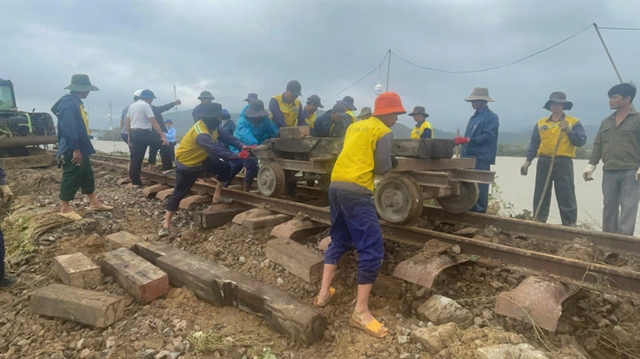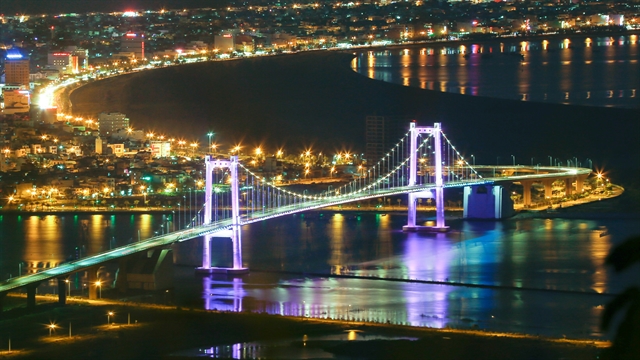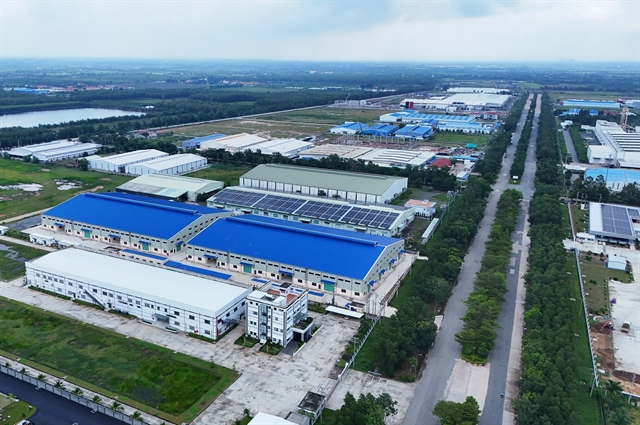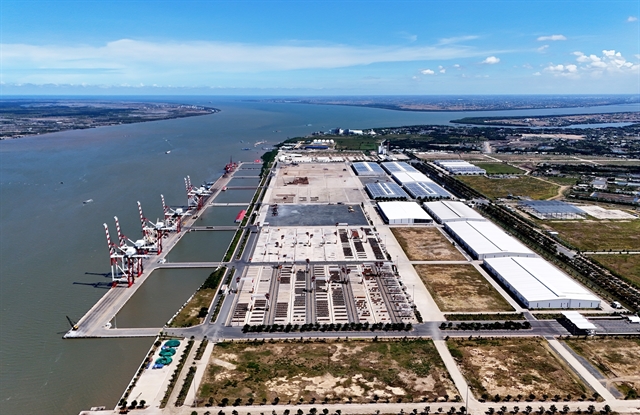 Society
Society


|
| Factories invested in An Phú Thạnh Industrial Park in Long An Province’s Bến Lức District. – VNA/VNS Photo Hồng Đạt |
LONG AN – Long An Province has undergone a remarkable transformation, changing from a war-ravaged and impoverished area into one of the most dynamic and rapidly developing provinces in the Cửu Long (Mekong) Delta.
In 1976, following the reunification of the country, Long An Province was officially established through the merger of the former Long An and Kiến Tường provinces, along with Đức Hòa and Đức Huệ districts from the former Hậu Nghĩa Province.
After the liberation of the South and the national reunification in 1975, Long An had to both build and strengthen the revolutionary government while focusing on overcoming the severe consequences of two wars. At the same time, they faced the brutal Southwest border defence war.
The province also confronted numerous challenges, including outdated infrastructure, food shortages, scarcity of essential consumer goods, and growing social issues.
On June 27, 1980, the Provincial Party Committee’s Standing Board issued a resolution to pilot the trading of goods at negotiated prices across the entire province. This was regarded as a historic resolution, marking the beginning of the province’s renewal process.
The province’s economy and production experienced a clear recovery and growth, while people’s livelihoods stabilised and began to gradually improve. The mobilisation of goods into State hands also saw a significant increase.
As a result, the province exceeded its supply obligations to the central Government in terms of food, agricultural produce, and consumer goods. From being a poor agricultural province unable to meet its own food needs, Long An rose to become a pioneer in economic reform.
Around the same period, the province implemented a groundbreaking policy, mobilising human and material resources to unlock the potential of the alum-affected Đồng Tháp Mười (Plain of Reeds) region, which Nguyễn Thanh Hải, then Permanent Deputy Secretary of the Provincial Party Committee, called an extremely bold move, as the region was considered a “dead land, impossible to reclaim and unsuitable for rice cultivation”.
Nguyễn Thị Bé, former Deputy Head of the Provincial Party Committee’s Organisation Board, said reclaiming the region required building a road running through its heart, which led to the construction of Road 49 (now National Highway 62).
“I was then deputy secretary of the province's Youth Union and was appointed chief commander of all forces involved in building Road 49. During the construction of the road, there were always more than 1,000 young volunteers working at the site, filling soil and laying the road.”
In 1984, the 45km Hồng Ngự – Vĩnh Hưng Canal near the Cambodia border of Đồng Tháp and Long An provinces began operating, bringing fresh water from the Tiền River across the Đồng Tháp Mười region to the Vàm Cỏ Tây River. This helped wash away alum, improving soil quality and gradually transforming the area into a fertile agricultural region.
Road 49 and the Hồng Ngự – Vĩnh Hưng Canal revitalised the once-dormant land, drawing tens of thousands of households to reclaim and settle the region.
Last year, rice cultivation in Đồng Tháp Mười in the province covered 448,000ha, yielding over 2.7 million tonnes, with 80 per cent being high-quality rice.
The Đồng Tháp Mười region (Long An, Đồng Tháp and Tiền Giang provinces) and the Long Xuyên Quadrangle (An Giang and Kiên Giang provinces and Cần Thơ) are now the country’s two largest rice-producing areas, playing a key role in national food security and rice exports.
Nguyễn Văn Thơi in Tân Hưng District’s Vĩnh Đại Commune, who was one of the first settlers in Đồng Tháp Mười, said: “the whole region was once covered in wild grass and reeds, with alum-contaminated water and low rice yields. Thanks to human effort and improved irrigation, productivity rose.”
Thơi now owns more than 60ha of high-quality rice fields, cultivating three crops a year with an average yield of 6.5-7 tonnes per hectare per crop.
He earns billions of đồng annually and employs seven local workers, each earning VNĐ7–8 million (US$270-310) per month.

|
| Farmers in Long An Province’s Châu Thành District harvest dragon fruit, the district’s key crop. Châu Thành is the province’s first advanced new-style rural district.– VNA/VNS Photo Đức Hạnh |
Becoming an industrial province
Though Long An had addressed the food security challenge, it remained a low-income, agriculture-based province in the 1990s.
According to Trương Văn Tiếp, former Secretary of the province Party Committee, to create breakthrough development, the province identified the need to “accelerate economic restructuring towards industrialisation and modernisation on a larger and more advanced scale,” with a focus on developing infrastructure and industry, and industrial parks and clusters.
In 1997, the Government approved the province’s first two industrial parks – Đức Hòa 1 and Đức Hòa 2 (now Xuyên Á Industrial Park) – paving the way for a new direction in infrastructure investment to support industrial production.
Long An neighbours HCM City and has key transport routes – National Highway 1 and National Highway 50 – and is located in the Southern Key Economic Zone, and these advantages help it attract investment.
Since 2020, many investors in industrial park infrastructure have started shifting their operation to the province. In the first few years of the 2000s, 35 companies had invested in 34 infrastructure projects in the province’s 17 industrial parks.
As infrastructure was upgraded, industrial activities expanded, and this drove growth in trade and services and accelerated the province’s transition from an agriculture-based economy to one centred on industry and urban development. Job opportunities increased and living standards improved significantly.

|
| Long An International Port, covering 1.47 sq. km, is located on the Soài Rạp River in Tân Tập Commune in Long An Province’s Cần Giuộc District. – VNA/VNS Photo Hồng Đạt |
Nguyễn Văn Út, Chairman of the provincial People’s Committee, said Long An now has the largest economy in the Mekong Delta and ranks 13th nationwide.
The province’s GRDP reached nearly VNĐ190 trillion ($7.3 billion), with per capita income at VNĐ107.3 million ($4,120) last year.
The province’s economy continues to shift to industrialisation and modernisation, with the industry–construction sector accounting for more than 52 per cent of the province’s economic structure, while the agriculture–forestry–fishery sector, less than 16 per cent.
The province is also considered one of the most attractive investment destinations in the country. Its Provincial Competitiveness Index (PCI) consistently ranks among the top.
It has the second-largest planned industrial park area in the country (after Bình Dương Province), with 51 industrial parks covering more than 12,500ha. Of these, 26 parks with nearly 4,300ha are ready to welcome investors.
It currently has 2,250 domestic investment projects with total capital of nearly VNĐ475 trillion ($18.3 billion), and more than 1,400 FDI projects with registered capital exceeding $12.7 billion.
The province aims for rapid and sustainable development in the coming years, with a focus on streamlining the political system and promoting administrative reform, according to Nguyễn Văn Quyết, Secretary of the province Party Committee.
Long An and Tây Ninh provinces will be merged into a new province and this will open up a broader space and greater potential for stronger growth, he said.
This merger will not erase the unique identities of each locality, but rather embody the enduring spirit of resilience, diligence, innovation, and creativity passed down from previous generations – serving as the foundation for comprehensive and sustainable development for shared prosperity, he said. – VNS